The Science of Sock Comfort: Key Materials and Advanced Technologies
Ever wondered what makes some socks feel like a warm hug for your feet while others leave you itching and uncomfortable? Dive into the intriguing world of sock comfort with us as we explore the science behind materials and technology that create the perfect pair. From moisture-wicking wonders to cushioned paradises, understanding the intricate details can revolutionize your daily comfort levels. Join us on a journey through fibres, weaves, and innovations that elevate your sock game to a whole new level of cosiness. Get ready to step into a world where every stride is cushioned and every movement feels just right.
The Importance of Sock Comfort
Foot Health
Wearing comfortable socks is crucial for maintaining optimal foot health. Socks made from high-quality materials like merino wool or moisture-wicking fabrics help prevent moisture build-up, reducing the risk of fungal infections.
Comfortable hiking socks with adequate cushioning and arch support can significantly reduce foot fatigue, allowing hikers to enjoy longer treks without discomfort. Compression socks are designed to improve circulation, reducing swelling and discomfort during long periods of standing or sitting.
Untreated socks made from synthetic materials can cause friction, leading to blisters and calluses. Opting for compression socks or ankle socks made from breathable and soft fabrics can prevent these common foot issues.
Daily Activities
The comfort provided by sock quality directly impacts daily activities. Softness and proper fit can enhance overall comfort, making tasks like walking, running, or standing for extended periods more enjoyable.
When feet are properly supported and cushioned by comfortable socks, individuals experience reduced foot fatigue, enabling them to stay on their feet for longer durations without discomfort. This improved endurance positively influences productivity and overall well-being.
Wearing comfortable socks tailored to specific activities, such as sports or work, can also improve performance by providing the necessary support and cushioning. Properly fitting socks reduce the likelihood of blisters and sore spots, allowing individuals to focus on their tasks without distractions.
Psychological Benefits
Beyond physical comfort, wearing soft and comfortable socks contributes to psychological well-being. The sensation of cozy fabric against the skin can evoke feelings of warmth and security, promoting relaxation and reducing stress levels.
The act of pampering one's feet with soft and comforting socks can be a simple yet effective self-care ritual. This small gesture of prioritising comfort can boost self-esteem and create a sense of indulgence, leading to an overall positive mood throughout the day.
Choosing comfortable socks that align with personal preferences in terms of texture and fit can also enhance one's mood. The satisfaction derived from wearing favourite pairs of socks can elevate one's mood and provide a sense of comfort and familiarity.
Key Materials in Comfortable Socks
Natural Fibres
Cotton: Known for its softness and breathability, cotton is a common choice for comfortable socks. Its ability to absorb moisture helps keep feet dry, reducing the risk of blisters and discomfort. However, cotton can retain moisture, leading to dampness and potential odour issues.
Wool: A natural insulator, wool is excellent for regulating temperature. It keeps feet warm in cold conditions and cool in hot weather. wool wicks away moisture, making it an ideal material for preventing sweaty feet and maintaining freshness.
Bamboo: An eco-friendly option, bamboo fibres are naturally antibacterial and hypoallergenic. Socks made from bamboo offer softness, moisture-wicking properties, and odour resistance. They are perfect for individuals with sensitive skin or allergies.
Synthetic Fibres
Polyester: Widely used in sock manufacturing, polyester enhances durability and quick-drying capabilities. It provides strength and shape retention to socks while offering moisture-wicking properties. However, polyester may not be as breathable as natural fibres.
Nylon: Recognised for its strength and elasticity, nylon is often blended with other materials to improve durability and stretchiness. Nylon reinforces high-friction areas like the heel and toe, enhancing the sock's longevity and wear resistance.
Blended Materials
Blending natural and synthetic fibres combines the benefits of both types of materials. By mixing cotton with spandex, socks achieve a snug fit and stretchiness while maintaining breathability. Similarly, combining wool with polyester creates socks that are warm, durable, and moisture-wicking.
Impact on Durability
The choice of materials significantly impacts sock durability. Natural fibres like wool and cotton offer comfort but may wear out faster than synthetic fibres due to their softer nature. On the other hand, synthetic fibres such as nylon and polyester provide strength and resilience against abrasion, increasing the sock's lifespan.
Maintenance Tips
To prolong the life of your comfortable socks:
- Wash them inside out to protect the fabric.
- Avoid using fabric softeners as they can reduce moisture-wicking abilities.
- Air dry instead of using a dryer to prevent shrinkage and maintain shape.
Cotton and Wool
Softness vs. Moisture-Wicking
Cotton, known for its softness, is a popular choice for socks due to its gentle feel against the skin. In contrast, wool excels in moisture-wicking, making it ideal for keeping feet dry and comfortable. Cotton socks are favoured for their plush texture, perfect for everyday wear, while wool socks are preferred during intense physical activities.
Wool's ability to wick moisture away from the skin surpasses that of cotton, ensuring feet stay dry and odour-free. This feature makes wool socks a top choice for athletes and outdoor enthusiasts. On the other hand, cotton's softness provides a luxurious sensation, making it a staple in casual and formal sock wear.
Temperature Regulation with Merino Wool
Merino wool, known for its exceptional quality, offers remarkable temperature regulation properties. Whether in hot or cold climates, Merino wool adjusts to the body's temperature, keeping feet comfortable throughout the day. This unique characteristic makes Merino wool socks versatile and suitable for various weather conditions.
- Pros:
- Cotton: Soft and comfortable
- Wool: Excellent moisture-wicking properties
Hypoallergenic Nature of Wool
One of wool's standout features is its hypoallergenic nature, making it an excellent choice for individuals with sensitive skin or allergies. Unlike untreated cotton socks that may cause skin irritations due to chemicals used in processing, wool socks are naturally gentle on the skin. The fineness of wool fibres adds to its hypoallergenic properties, ensuring a comfortable wearing experience.
Environmental Impact Comparison
When considering the environmental impact of cotton versus wool production, wool emerges as the more sustainable option. Conventional cotton farming involves heavy pesticide use and significant water consumption, contributing to environmental degradation. In contrast, wool production has a lower environmental footprint as sheep can graze on natural pastures without the need for extensive irrigation or chemical inputs.
- Cons:
- Cotton: High water consumption and pesticide use
- Wool: Requires energy-intensive processing techniques
Synthetic Fibres
Elasticity and Fit
Synthetic fibres in socks offer enhanced elasticity and a snug fit, ensuring they conform well to the feet. This feature is particularly beneficial for individuals seeking socks that provide optimal support during various activities.
When it comes to fit, synthetic fibres such as polyester and nylon excel in providing a secure and tailored feel. Unlike natural materials like cotton, these fibres maintain their shape well, preventing sagging or stretching over time. This characteristic is crucial for maintaining a consistent fit, especially in athletic or compression socks.
The use of spandex, a common synthetic fibre known for its stretchiness, significantly contributes to the snug fit of modern socks. By blending spandex with other materials, sock manufacturers can create products that offer both flexibility and form-fitting comfort. This blend ensures that the socks stay in place without being too tight or restrictive.
Durability and Wear Resistance
Polyester and nylon, two prevalent synthetic fibres used in sock production, play vital roles in enhancing durability and wear resistance. These materials are renowned for their toughness and ability to withstand frequent washing and prolonged use without losing their shape or integrity.
In comparison to natural fibres like wool, which may wear out quickly with excessive use, polyester and nylon-based socks exhibit long-lasting performance. This durability makes them ideal choices for individuals looking for socks that can withstand the rigours of daily wear or intense physical activities.
The incorporation of polyester and nylon also helps prevent issues such as fungal infections by creating an environment in which moisture is efficiently wicked away from the skin. This feature is particularly crucial in athletic socks, where moisture management plays a significant role in maintaining foot health and comfort during workouts or sports activities.
Moisture-Wicking Properties
One of the key advantages of synthetic materials in athletic socks is their moisture-wicking properties. Fabrics like polyester excel in drawing sweat away from the skin, keeping the feet dry and comfortable even during intense physical exertion. This feature not only enhances overall comfort but also helps prevent issues such as blisters or odour buildup.
Athletes and active individuals often prefer socks made from synthetic fibres due to their ability to keep moisture at bay. By incorporating these moisture-wicking materials into sock designs, manufacturers can cater to the specific needs of individuals engaged in high-intensity activities where breathability and moisture control are paramount.
Advanced Technologies in Sock Manufacturing
Micro Modal Sock Fabrics
Micro modal sock fabrics, a breakthrough in the industry, offer exceptional softness and moisture-wicking properties, enhancing overall comfort. These fabrics are derived from sustainably sourced beech trees, making them environmentally friendly.
The incorporation of micro modal fibres in sock production results in luxuriously soft socks that are gentle on the skin, ideal for individuals with sensitive feet. Moreover, these fabrics possess excellent breathability, keeping feet cool and dry throughout the day.
Micro modal sock fabrics also exhibit enhanced durability, ensuring longevity despite frequent wear and wash cycles. This technological advancement addresses the common issue of premature wear and tear in socks, providing consumers with long-lasting comfort and performance.
Pre-treated Socks for Enhanced Comfort
Pre-treated socks, another notable innovation, undergo special treatments during manufacturing to improve their overall feel and functionality. These treatments involve applying advanced solutions that enhance softness and moisture management.
By pre-treating socks before they reach consumers, manufacturers ensure that each pair delivers optimal comfort from the moment they are worn. This process eliminates the initial stiffness often associated with new socks, offering an instant plush feel against the skin.
The application of specialized treatments also enhances the odour-resistance capabilities of socks, making them ideal for prolonged wear without compromising freshness. As a result, pretreated socks remain comfortable and odour-free even after extended use.
Targeted Cushioning for Foot Fatigue Reduction
Innovative technologies have enabled the integration of targeted cushioning zones in sock designs to reduce foot fatigue and enhance overall comfort. These cushioned areas provide strategic support to high-impact areas such as the heels and balls of the feet.
The implementation of targeted cushioning ensures optimal shock absorption during activities that put pressure on specific parts of the foot. This feature not only minimises discomfort but also contributes to preventing injuries related to repetitive impact on hard surfaces.
Socks with targeted cushioning are particularly beneficial for athletes and individuals engaged in high-impact activities, offering enhanced protection and support during intense physical exertion. The strategic placement of cushioned zones optimises performance while maintaining comfort.
Seamless Knitting Techniques
Reduced Friction
Seamless knitting in sock construction utilises advanced technology to create a smooth, continuous surface that minimises friction against the skin. This reduction in friction is crucial for enhancing comfort, especially during long hours of wear. By eliminating bulky seams that can cause irritation, seamless socks provide a snug fit that feels like a second skin. The absence of seams also prevents rubbing and chafing, reducing the risk of blisters and discomfort.
Seamless designs in sock knits are achieved through intricate knitting techniques that seamlessly integrate different yarns to form a cohesive structure. This innovative approach not only enhances the overall comfort of the socks but also improves their durability. With seamless construction, there are no rough or uneven areas that could rub against the foot, ensuring a pleasant wearing experience. The precise alignment of yarns in seamless socks allows for better breathability, keeping the feet cool and dry even during strenuous activities.
Seamless sock production has revolutionised the way socks are manufactured, offering numerous benefits to both manufacturers and consumers. From a production standpoint, seamless knitting technology streamlines the manufacturing process, reducing waste and increasing efficiency. Manufacturers can produce socks with intricate patterns and designs without compromising on comfort or quality. Consumers, on the other hand, benefit from seamless socks that offer superior comfort, improved fit, and enhanced performance. The seamless construction not only enhances the aesthetic appeal of the socks but also ensures a snug and comfortable fit that is free from irritation or pressure points.
Advancements in Machinery
Recent advancements in machinery have played a pivotal role in enabling seamless sock production on a large scale. State-of-the-art knitting machines equipped with advanced technology can seamlessly knit intricate patterns and designs without the need for traditional stitching methods. These machines use computer-controlled systems to precisely manipulate yarns and create seamless structures that conform to the contours of the foot. By automating the knitting process, manufacturers can produce seamless socks with unparalleled precision and consistency, ensuring uniform quality across all products.
- Improved comfort due to reduced friction
- Enhanced durability and breathability
- Streamlined manufacturing process with reduced waste
- Superior fit and performance for consumers
Moisture-Wicking Technology
Benefits
Moisture-wicking technology is a crucial feature in sock design, especially for those seeking comfort and performance. It helps manage moisture by pulling sweat away from the skin, keeping feet dry and preventing discomfort.
Moisture-wicking socks play a significant role in maintaining foot health and comfort during various activities. By efficiently regulating temperature and reducing moisture build-up, these socks prevent issues like blisters and odour, ensuring a pleasant experience.
Fabric Varieties
Different breathable fabrics are used in moisture-wicking socks, each offering unique benefits. Materials like washi provide exceptional breathability, while others focus on cushioning or compression technology to enhance comfort and support.
- Pros:
- Enhanced comfort during physical activities
- Reduced risk of blisters and odour
- Improved foot health and overall performance
- Cons:
- May be pricier than traditional socks
- Require specific care instructions for longevity
Performance in Activities
In athletic and outdoor settings, the importance of moisture-wicking socks cannot be overstated. They effectively manage compression and pressure on the feet, ensuring optimal balance and support during intense workouts or long hikes.
Moisture-wicking socks are a game-changer for athletes and outdoor enthusiasts. Their ability to keep feet dry and comfortable promotes peak performance by preventing distractions caused by sweat accumulation or discomfort.
The Future of Sock Technology
Sustainable Innovations
Sustainable materials, such as bamboo and recycled polyester, are set to revolutionize sock technology. These eco-friendly alternatives reduce environmental impact while ensuring comfort and durability. Brands are increasingly embracing sustainability to meet consumer demands for greener products.
Brands like Nike and Adidas are leading the way in creating socks from recycled materials, showcasing a commitment to reducing waste in the fashion industry. This shift towards sustainability not only benefits the environment but also enhances the quality and performance of socks.
The incorporation of moisture-wicking technology in sustainable socks samples ensures that feet stay dry and comfortable throughout the day. As consumers become more environmentally conscious, the demand for sustainable socks is expected to soar, driving further innovation in this space.
Advanced Features Integration
Innovations in sock technology are moving beyond basic comfort to include advanced features like temperature regulation and smart capabilities. Imagine socks that adjust their warmth according to the weather or monitor foot health in real-time.
Future socks samples may incorporate sensors to track moisture levels, temperature, and even detect potential foot issues. This integration of technology into everyday socks not only enhances comfort but also promotes proactive foot care.
With advancements in knitting techniques, manufacturers can now create seamless socks with targeted support zones for different areas of the foot. These tailored designs improve fit, reduce friction, and enhance overall comfort for the wearer.
Consumer-Centric Design
Consumer feedback plays a crucial role in shaping the future of sock technology. Brands are actively listening to customer preferences, incorporating feedback on fit, cushioning, breathability, and style into their design process. By prioritising user experience, brands can develop socks that truly meet the needs and expectations of wearers.
Personalisation is another key trend in sock technology, allowing customers to customise their socks based on preferences such as cushioning levels, compression, and colours. This bespoke approach not only enhances comfort but also fosters a stronger connection between consumers and their footwear.
As brands continue to innovate and push boundaries in sock technology, we can expect a future where socks are not just a basic garment but a sophisticated accessory that combines style, comfort, and functionality seamlessly.
Smart Socks and Wearables
Health Metrics
Smart socks, equipped with sensors, revolutionize the way we monitor health. By tracking vital signs like heart rate and temperature, these socks provide valuable data for wearers. The integration of sensors in smart socks allows for continuous health monitoring without intrusive devices.
Smart socks offer a seamless solution for athletes seeking to enhance their performance. The incorporation of sensor technology enables real-time feedback on various metrics like stride length and foot pressure distribution. This data empowers athletes to make informed adjustments to their training routines, leading to improved results.
Benefits for Athletes
For athletes, the benefits of smart socks are manifold. These socks not only enhance performance but also aid in injury prevention through real-time monitoring of stress levels on muscles and joints. The ability to analyse gait patterns helps in refining techniques for optimal efficiency during training sessions and competitions.
- Pros:
- Enhanced performance monitoring
- Injury prevention through real-time data analysis
- Improved technique development through gait pattern analysis
Challenges and Opportunities
While the development of smart socks presents exciting opportunities, it also comes with its set of challenges. One such challenge is ensuring accuracy in the data collected by the sensors embedded in the socks. Calibration and precision are crucial to providing users with reliable health metrics and performance feedback.
The integration of sensor technology into everyday garments like socks opens up new avenues for healthcare applications. Smart socks have the potential to assist individuals with medical conditions by continuously monitoring vital signs and alerting them to any anomalies. This proactive approach to healthcare can lead to early detection and intervention, ultimately improving quality of life.
- Cons:
- Ensuring accuracy in sensor data
- Calibration challenges for precise measurements
- User acceptance and comfort levels with wearable technology
Development of Wearable Sock Technology
In the realm of wearable technology, smart socks represent a significant advancement. The use of advanced fabrics combined with sensor technology offers a glimpse into the future of functional garments. Innovations in sock knits and materials like spandex help create durable yet comfortable socks that cater to diverse needs.
The evolution of sock fabrics plays a crucial role in enhancing the properties of modern socks. From moisture-wicking capabilities to improved breathability, these advancements ensure that wearers experience optimal comfort throughout various activities. Whether it's casual wear or athletic pursuits, modern socks are designed to meet specific requirements.
Eco-Friendly Materials
Sustainable Fibres
Consumers are increasingly demanding sustainable materials in sock production due to environmental concerns. Brands are responding by incorporating organic cotton, bamboo, and recycled polyester into their sock designs. These materials offer durability and comfort while reducing the carbon footprint of production processes.
Innovative Technologies Antimicrobial treatments are being integrated into eco-friendly socks to enhance their antibacterial properties. Silver nanoparticles and natural oils like tea tree oil are used to prevent odour-causing bacteria growth, ensuring long-lasting freshness. These advancements in material technology not only improve hygiene but also extend the lifespan of socks.
Recycled Fibres The use of recycled fibres in sock manufacturing has gained momentum for its positive impact on the environment. By repurposing plastic bottles and textile waste, brands can create high-quality socks while reducing landfill waste. Recycled polyester, for instance, offers the same level of performance as virgin polyester but with lower energy consumption and greenhouse gas emissions.
Consumer Awareness
Consumer awareness plays a crucial role in promoting eco-friendly sock choices. As individuals become more conscious of sustainability issues, they seek out products that align with their values. Brands that transparently communicate their use of eco-friendly materials and manufacturing processes attract environmentally conscious consumers. Educational campaigns and initiatives further raise awareness about the benefits of choosing sustainable socks.
Benefits of Recycled Materials Choosing socks made from recycled materials not only reduces environmental impact but also supports a circular economy. Recycled fibres require less water and energy to produce, contributing to resource conservation. These materials help divert plastic waste from oceans and landfills, addressing the global plastic pollution crisis.
Increasing Availability The availability of eco-friendly socks has expanded significantly in recent years, catering to diverse consumer preferences. From athletic socks to everyday wear, sustainable options are now widely accessible across various price points. This accessibility allows consumers to make environmentally conscious choices without compromising on style or performance.
Customisation and Personalisation
Tailored Fit
Custom-fit socks are gaining popularity due to their innovation in catering to individual needs. This trend reflects a shift towards more personalised products, providing choice and comfort to consumers. With advancements in technology, individuals can now enjoy socks that are specifically designed to offer optimal support and performance.
The use of 3D knitting technology has revolutionised the way socks are made, allowing for precise customisation based on an individual's foot shape and size. This technology enables the creation of seamless socks that fit like a second skin, reducing the risk of blisters and discomfort. By utilising this advanced manufacturing process, sock companies can deliver products that not only look great but also provide unparalleled comfort.
One of the key benefits of custom-fit socks is their ability to enhance comfort and performance during various activities. Whether it's running, hiking, or simply going about daily tasks, having socks that are tailored to your feet can make a significant difference. These personalised socks can improve blood circulation, reduce fatigue, and prevent injuries, ultimately enhancing the overall experience of wearing them.
Reflecting Individual Style
In addition to improving comfort and performance, customisation in sock design offers individuals the opportunity to showcase their unique style. From choosing specific colours and patterns to adding personal touches like initials or logos, custom-fit socks allow wearers to express themselves creatively. This level of personalisation not only enhances the aesthetic appeal of the socks but also adds a sense of individuality to one's wardrobe.
- Pros:
- Enhanced comfort and performance tailored to individual needs.
- Reduction in discomfort such as blisters due to precise custom-fit.
- Opportunity for self-expression through unique designs and styles.
- Cons:
- Custom-fit socks may come at a higher price point compared to standard options.
- Limited availability of custom-fit options in mainstream retail stores.
Future Possibilities
As technology continues to advance, the potential for personalisation in sock design is limitless. From incorporating smart fabrics that adjust to different conditions to offering treatments for specific medical conditions, custom-fit socks have the capacity to evolve further. Imagine socks that can adapt to varying temperatures or provide targeted support for individuals with specific foot ailments – the future of customised socks holds exciting possibilities.
With data-driven insights playing a crucial role in product development, custom-fit socks could soon be tailored not just to individual preferences but also to address specific medical conditions. By understanding the role of materials and construction in enhancing comfort and support, sock manufacturers can create products that cater to a wide range of needs. The intersection of technology, design, and personalisation is shaping the future of sock innovation.
Closing Thoughts
In the world of comfortable socks, materials and technology play a crucial role. From the softness of cotton and warmth of wool to the innovation of synthetic fibres and advanced manufacturing techniques, every element is designed to enhance your comfort and performance. The future promises smart socks, eco-friendly options, and personalised experiences tailored just for you.
Sock geeks are passionate enthusiasts who delve deep into the world of socks, exploring every detail that contributes to the perfect pair. From dissecting the finest materials like merino wool and bamboo to understanding the latest moisture-wicking technologies, sock geeks are always in pursuit of optimal foot comfort. They appreciate the craftsmanship behind seamless knitting, targeted cushioning, and eco-friendly fibers, viewing socks as more than just an accessory, but an essential element of daily comfort and expression. For sock geeks, every stitch matters, and they stay updated on innovations in sock technology that promise even greater coziness and performance.
Invest in your comfort by choosing socks that not only feel good but also support your lifestyle. Keep an eye out for the latest technologies and sustainable materials that align with your values. Your feet carry you through each day, so why not treat them to the best? Stay informed, explore new options, and step into a world where every stride is cushioned with care.
Frequently Asked Questions
What are the key materials used in comfortable socks?
Cotton, wool, and synthetic fibres like polyester and nylon are commonly used in comfortable socks due to their softness, breathability, and moisture-wicking properties.
How do seamless knitting techniques enhance sock comfort?
Seamless knitting eliminates uncomfortable seams, reducing friction against the skin and providing a smooth, irritation-free fit for enhanced comfort during wear.
What is moisture-wicking technology in socks?
Moisture-wicking technology in socks helps to draw moisture away from the skin, keeping your feet dry and comfortable by preventing sweat build-up and potential odour.
How do smart socks and wearables contribute to sock technology?
Smart socks integrate sensors or tracking devices to monitor activity levels, temperature, or pressure points, providing valuable insights for performance improvement and foot health monitoring.
Why are eco-friendly materials important in sock manufacturing?
Eco-friendly materials support sustainability efforts by reducing environmental impact through the use of recycled fibres, organic cotton, or biodegradable components in sock production.




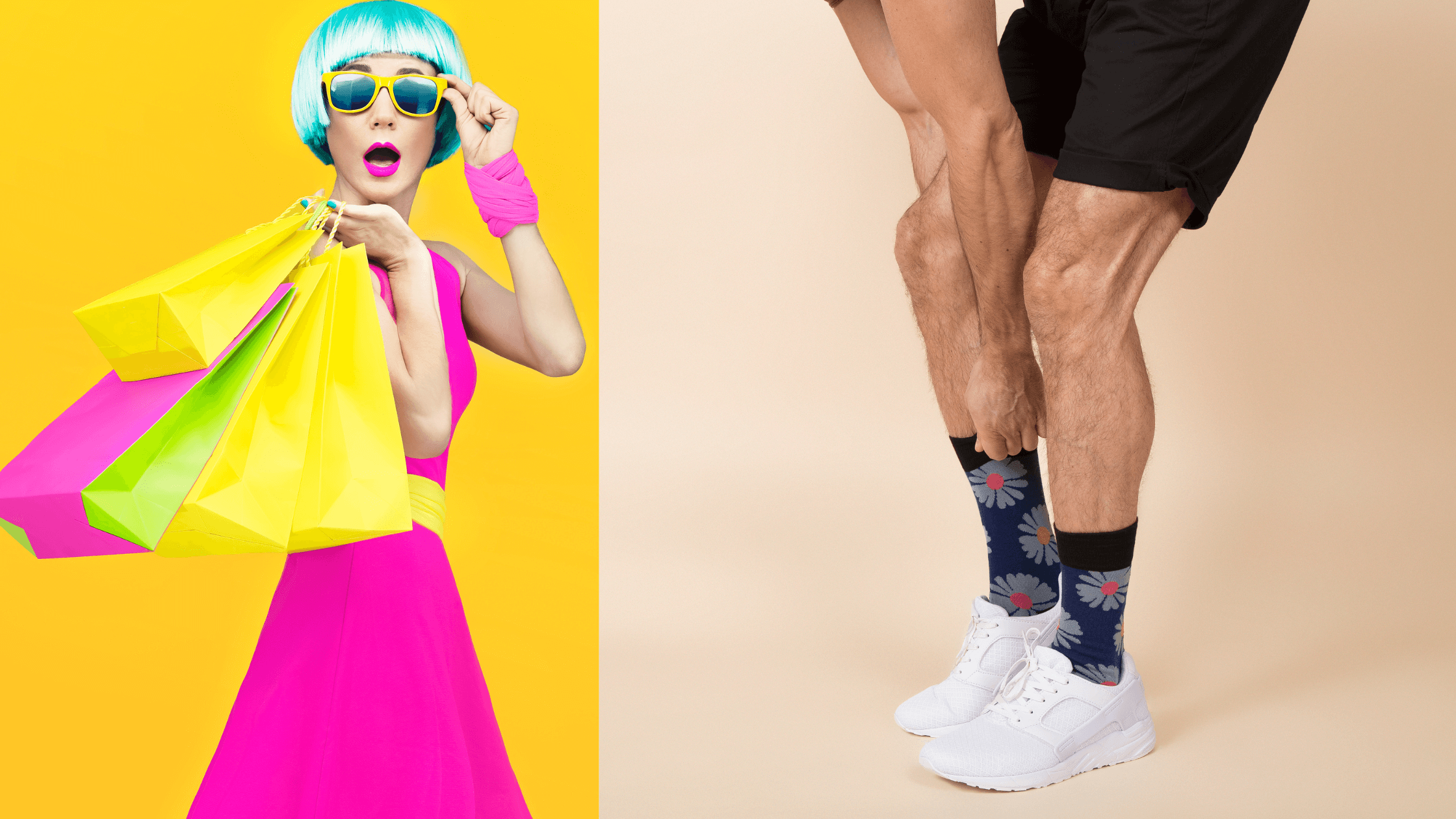
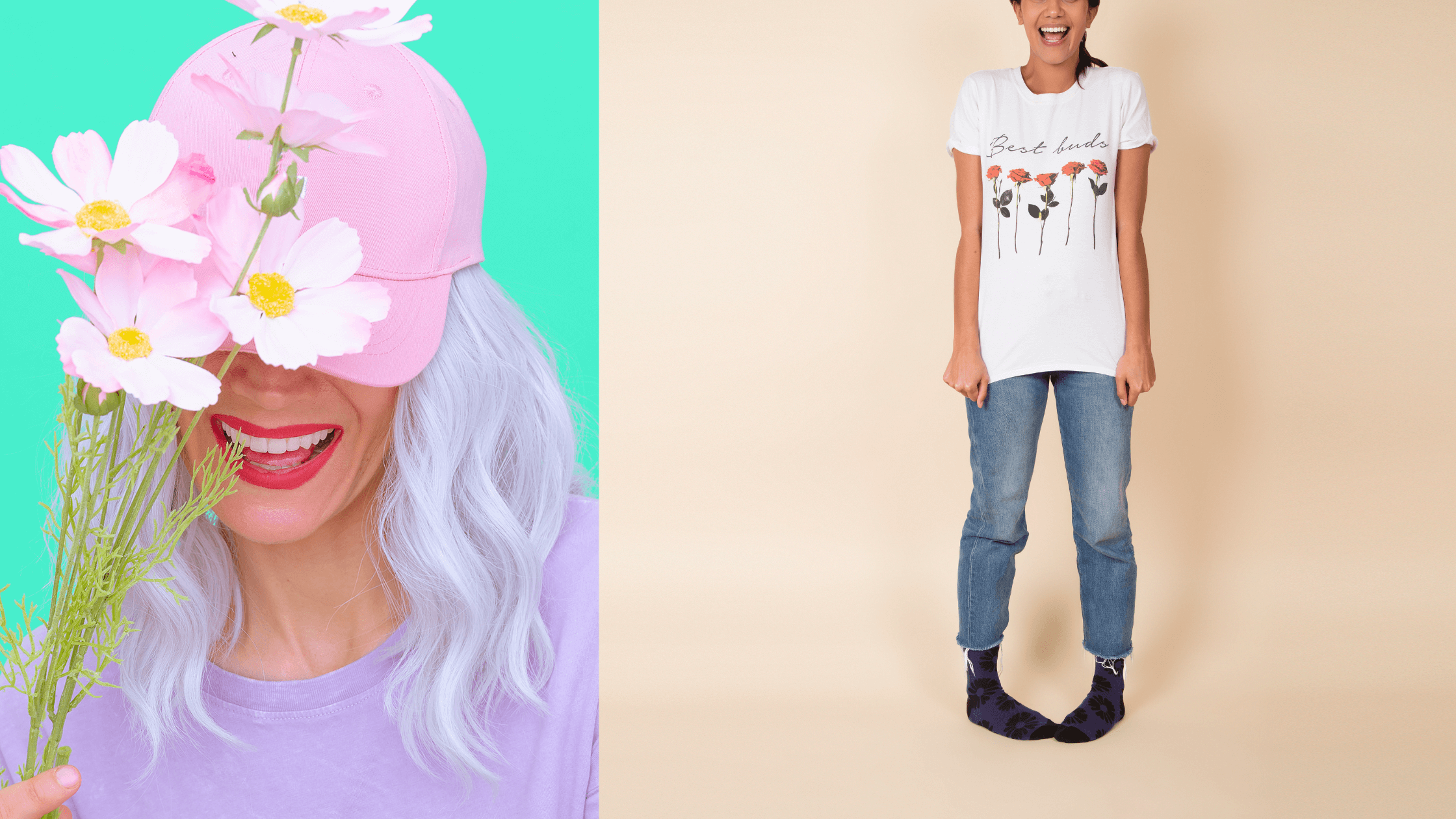







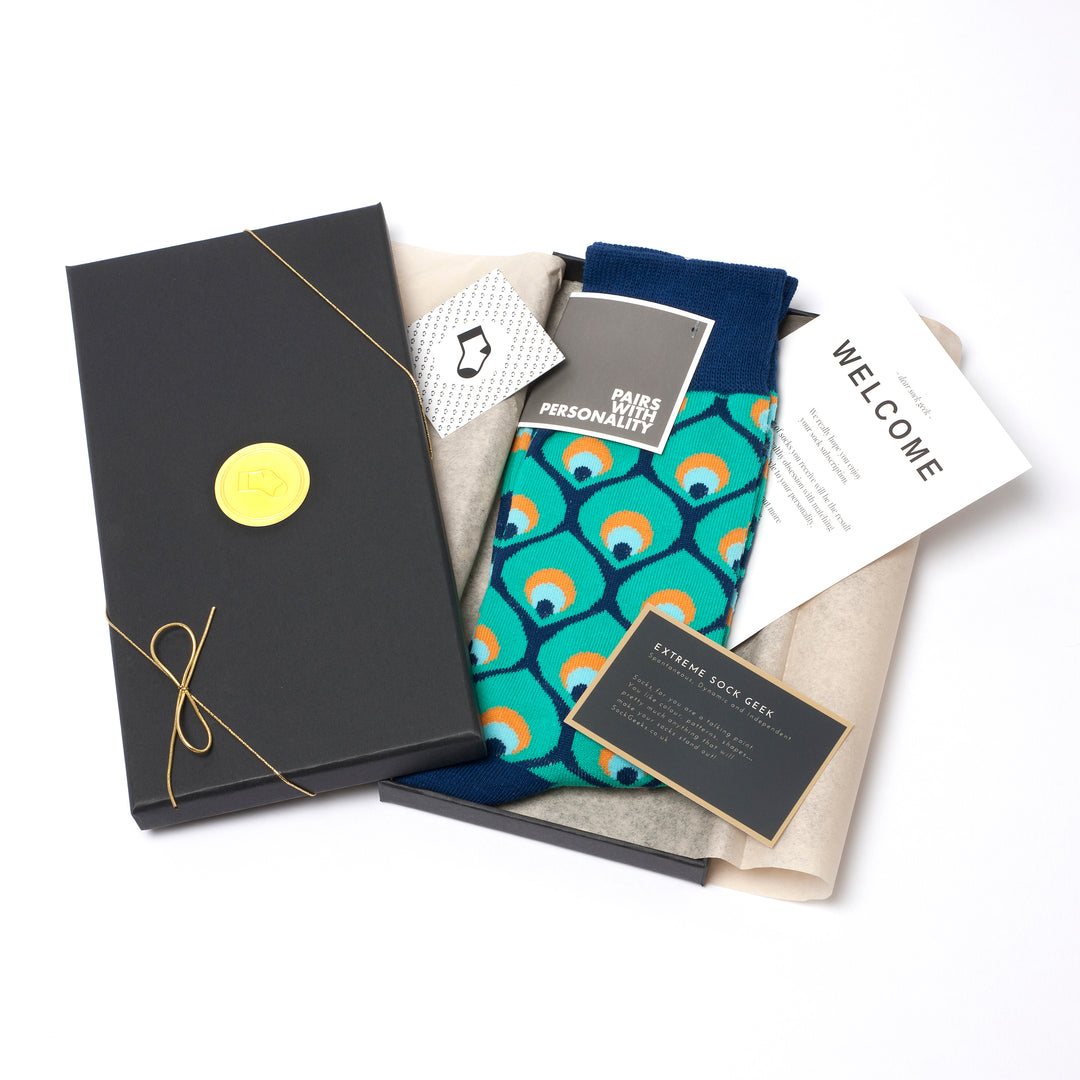

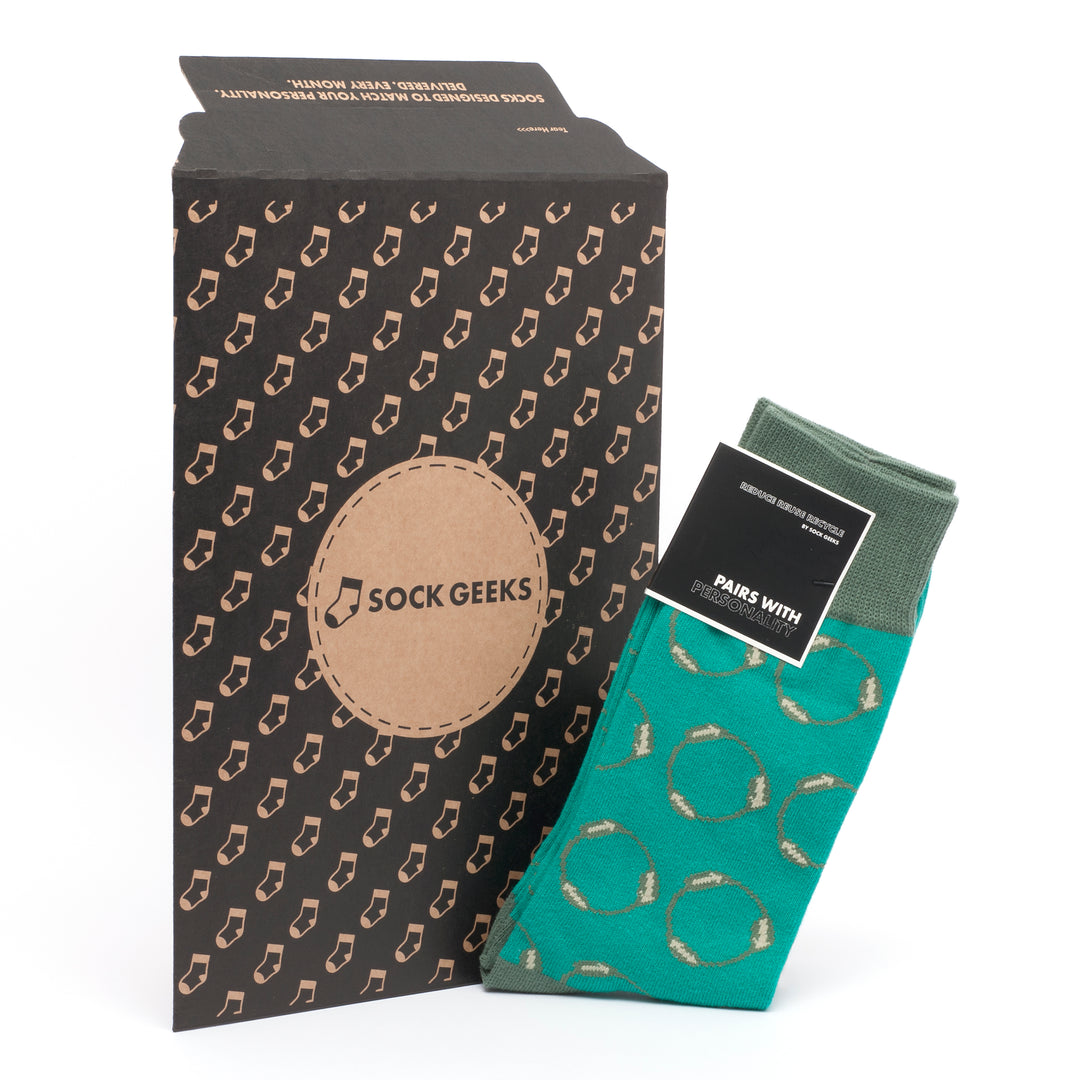
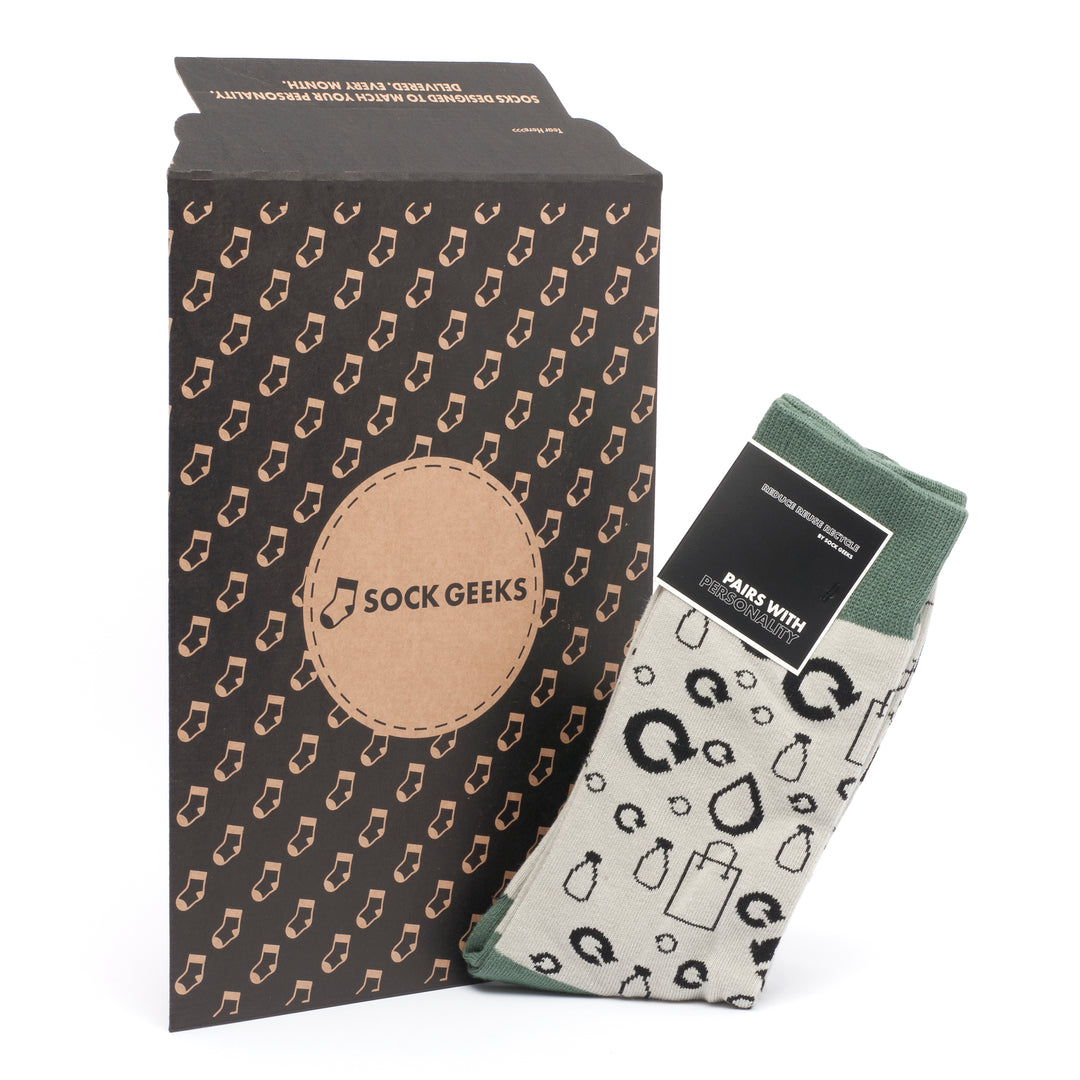



Leave a comment